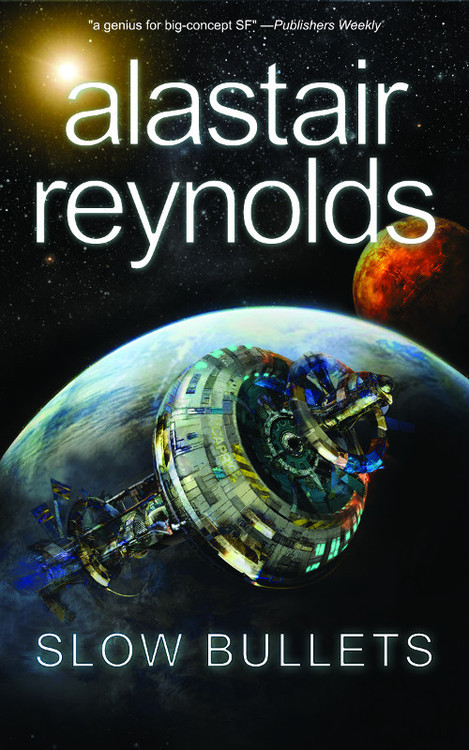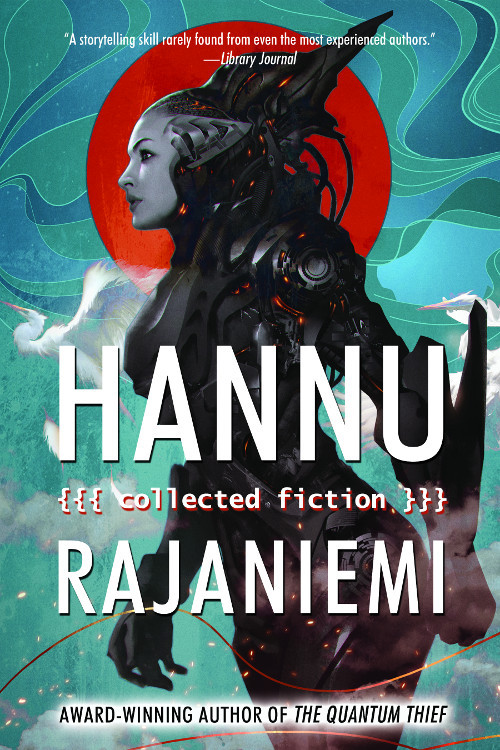SLOW BULLETS is Reynolds’ best work to date

Two new reviews of Alastair Reynolds’ SLOW BULLETS.
Giving up more of the story would serve no purpose, as Slow Bullets relies mostly on that to move along and deliver its punches. Character development is largely token, the writing itself is not much more detailed, and though some would call this text hard SF, it is far from air-tight scientific plausibility. This lean approach combines well with the parabolic feel of the novelette, as it virtually leaves you no time whatsoever to quibble about the sparseness of the data it presents. A quick succession of energetic conceptual jabs, and that’s it, now go ponder the vastness of the universe and the infinite malleability of the human spirit.
<snip>
Slow Bullets never pretends to be the container of any deep philosophical kernels. It does touch upon hefty topics like religion, identity, retribution, etc., but it does so in a matter-of-factly sort of way that is to an extent justified by the ending of the book. It’s a rather limited approach to fiction, but it works fine in these constraints and serves to highlight the already mentioned conceptual density of which the genre is so conducive. The concept of the slow bullets – computational devices that burrow into soldiers’ bodies and serve as records for their memories and identities – is particularly successful, in that Reynolds manages to layer several planes of interpretation, literal and metaphorical, over that image. It is a rather mechanistic fusion of meanings, but the voice, tone and vigor of the book certainly make it a viable one.
There is not much else to write about this rather fast bullet of a novel. You’d be better off to just go read it, really. It may lack significantly in terms of texture (and Reynolds has shown convincingly that he can capture high-dimensional texture, especially in Blue Remembered Earth), but it compensates for that with pithiness and dash. I am almost tempted to subcategorize it in the non-genre of SF parable, a curious thought, bearing in mind that it also deals with cosmological space-time magnitudes and is firmly embedded in space opera. Funny thing, this SF, you never know how it may surprise you.
MUSINGS/TRÄUMEREIEN/DEVANEIOS:
“Slow Bullets” seems to me a departure from his usual tackle on SF. Less Stapledonian in scope and landscape, but trying to be more character-driven. Due to the form chosen (novella), this approach was not entirely successful. In today’s SF market we are used to be spoon fed with hundreds of pages of narrative, character development, prose and a sense of aggrandizement. With this story, Reynolds chose a middle ground between the economy of the short story and the enjoyment of rounding out characters and plot over huge chunks of text. Without room to explore possible ramifications, and the other characters (e.g., Prad) it suffers from the need to rush through events without properly explaining them. When I say “explaining”, I’m really talking about the need to “show-not-tell” more story.
We can feel the story wanting to burst from the constraints imposed on it by the novella-form. The bigger the better? Not necessarily. But is this particular instantiation, I think the Story would have been better served by using the longer form. Despite all these shortcomings, this is probably Reynold’s best work to date.
For more about SLOW BULLETS, visit the Tachyon page.
Cover art by Thomas Canty.
Design by Elizabeth Story.

